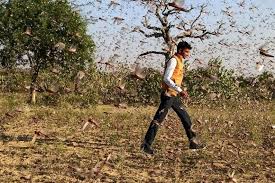District Facing Water Crisis: Per Capita Water Availability in The Country Is Reducing Due to Increase in Population.
(Judicial Quest News Network)
The average annual water availability of any region of country is largely dependent upon hydro- meteorological and geological factors; and such water resources data is assessed basin-wise. The per capita water availability in the country is reducing due to increase in population. Also, due to high temporal and spatial variation of precipitation, the water availability in many regions of the country is much below the national average and this may result in water stressed / scarce conditions.
The Dynamic Ground Water Resources of the country are being periodically assessed jointly by Central Ground Water Board (CGWB) and State Governments. As per the 2020 assessment, out of the total 6965 assessment units (Block/ Taluks/ Mandals/ watersheds/ Firkas) in the country, 1114 units in 15 States/UTs have been categorized as ‘Over-exploited’ where the Annual Ground Water Extraction is more than Annual Extractable Ground Water Resource.
Water being a State subject, steps for augmentation, conservation and efficient management of water resources are primarily undertaken by the respective State Governments. In order to supplement the efforts of the State Governments, Central Government provides technical and financial assistance to them through various schemes and programmes.
The Hon’ble Prime Minister of India launched the “Jal Shakti Abhiyan: Catch the Rain” (JSA:CTR) on 22nd March, 2021, the World Water Day, with the theme “Catch the Rain – Where it Falls When it Falls” to cover all the blocks of all districts (rural as well as urban areas) across the country during 22nd March, 2021 to 30th November, 2021 – the pre-monsoon and monsoon period. The focused interventions for JSA includes water conservation & rainwater harvesting, renovation of traditional and other water bodies/tanks, reuse and recharge of borewells, watershed development and intensive afforestation.
In addition to this campaign on supply side management, National Water Mission had also started a campaign “Sahi Fasal” to nudge farmers to favour agricultural crops which consume less water and to use water more efficiently in agriculture, as a part of demand side management. Drawing excessive ground water for Agriculture is one of the main reasons for depletion of the ground water in many districts.
The Atal Mission for Rejuvenation and Urban Transformation (AMRUT) was launched by the Government of India on June 25, 2015 in selected 500 cities and towns across the country for a period of 5 years i.e. from FY 2015-2016 to FY 2019-2020, which has been extended for completing the grounded projects. The Mission focuses on the development of basic urban infrastructure in the Mission cities in the sectors of water supply, sewerage & septage management, storm water drainage, green spaces & parks and non-motorized urban transport.
The Government of India, in partnership with States, is implementing Jal Jeevan Mission-Har Ghar Jal, which aims at providing potable water of prescribed quality and in adequate quantity on regular and long-term basis, to every rural household including tribal areas of the country through tap water connections by 2024.
Pradhan Mantri Krishi Sinchayee Yojana (PMKSY) was launched in 2015-16 with an aim to enhance physical access of water on farm and expand cultivable area under assured irrigation, improve on farm water use efficiency, introduce sustainable water conservation practices etc. Under Har Khet Ko Pani (HKKP) component of PMKSY, Repair, Renovation and Restoration (RRR) of Water Bodies Scheme was launched which aims at revival of irrigation potential by improvement and restoration of water bodies by enhancing the tank storage capacity along with other multiple objectives such as ground water recharge, increased availability of drinking water, improvement of catchment of tank commands etc. Under the Repair, Renovation and Restoration (RRR) of Water Bodies scheme, since 12th plan onwards, 2228 schemes are ongoing. Further, 1549 water bodies have been reported to be completed upto March, 2021. Target irrigation potential restoration of these schemes is 1.89 L Ha and out of this, 1.31 L Ha is reported to be restored till March, 2021.
During 2016-17, ninety-nine (99) on-going Major/Medium irrigation projects (and 7 phases) under Pradhan Mantri Krishi Sinchayee Yojana (PMKSY) – Accelerated Irrigation Benefits Programme (AIBP) have been prioritized in consultation with States for completion in phases out of which AIBP works of 44 projects have been reported to be completed/almost completed. During 2016-17 to 2020-21, 22.47 lakh hectare has been reported to be created by these projects in the country.
Moreover, a special package for completion of irrigation projects to address the agrarian distress in Vidarbha and Marathwada and other chronically drought prone areas of rest of Maharashtra has been approved during 2018-19. Under the special package, 8 MMI and 83 Surface Minor Irrigation (SMI) projects are planned to be completed in phases up to 2022-23.
Some steps taken by the Central Government to control ground water depletion and promote rain water harvesting/conservation are available at the URL:


